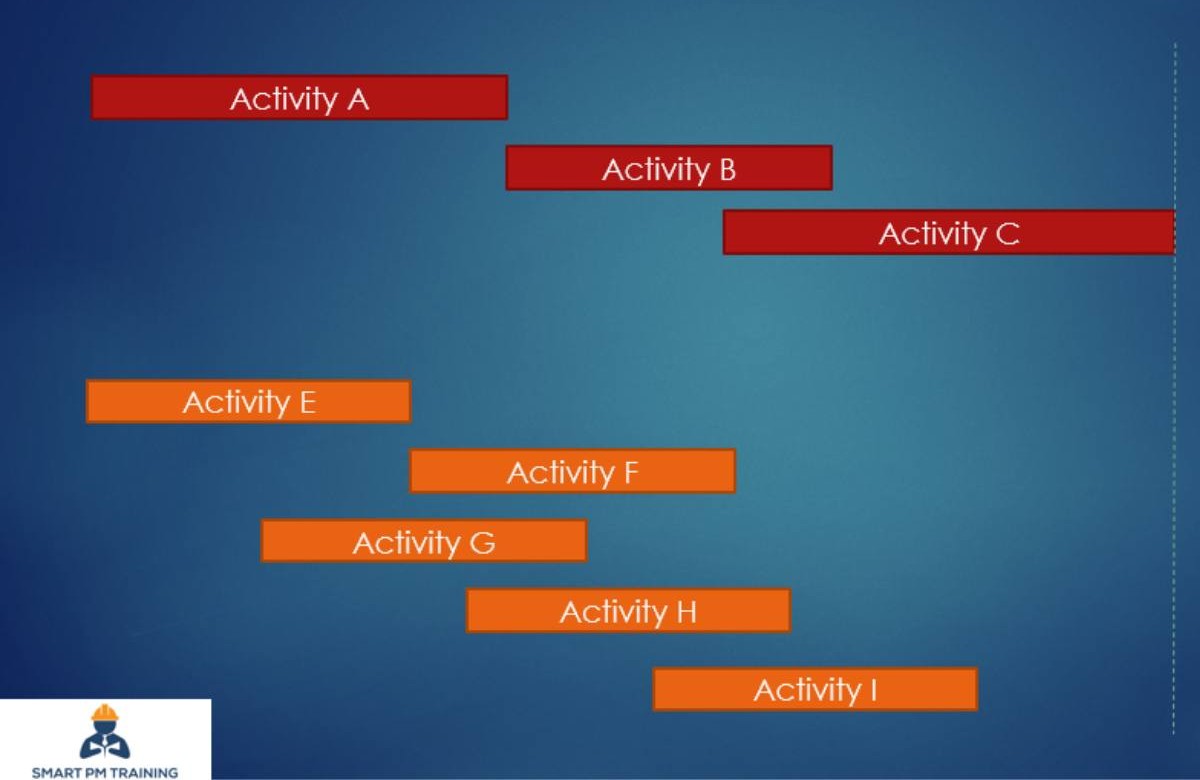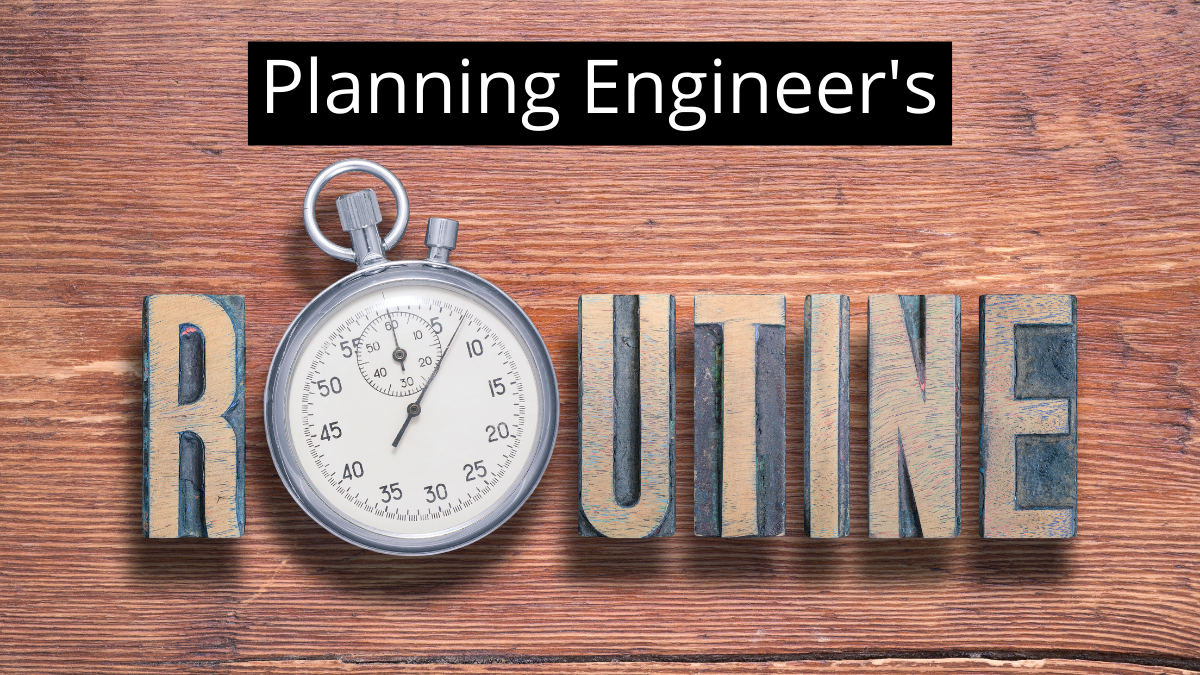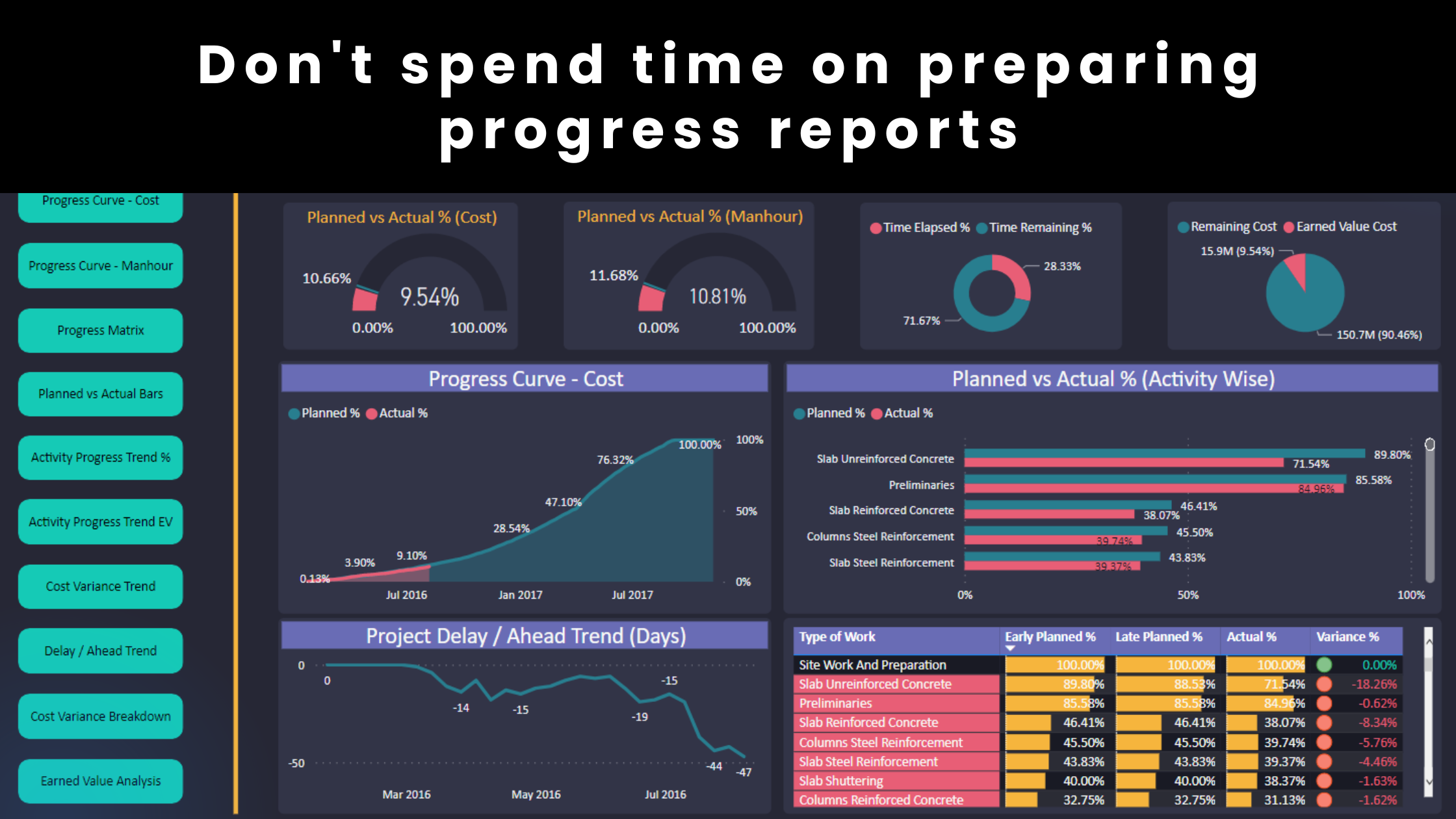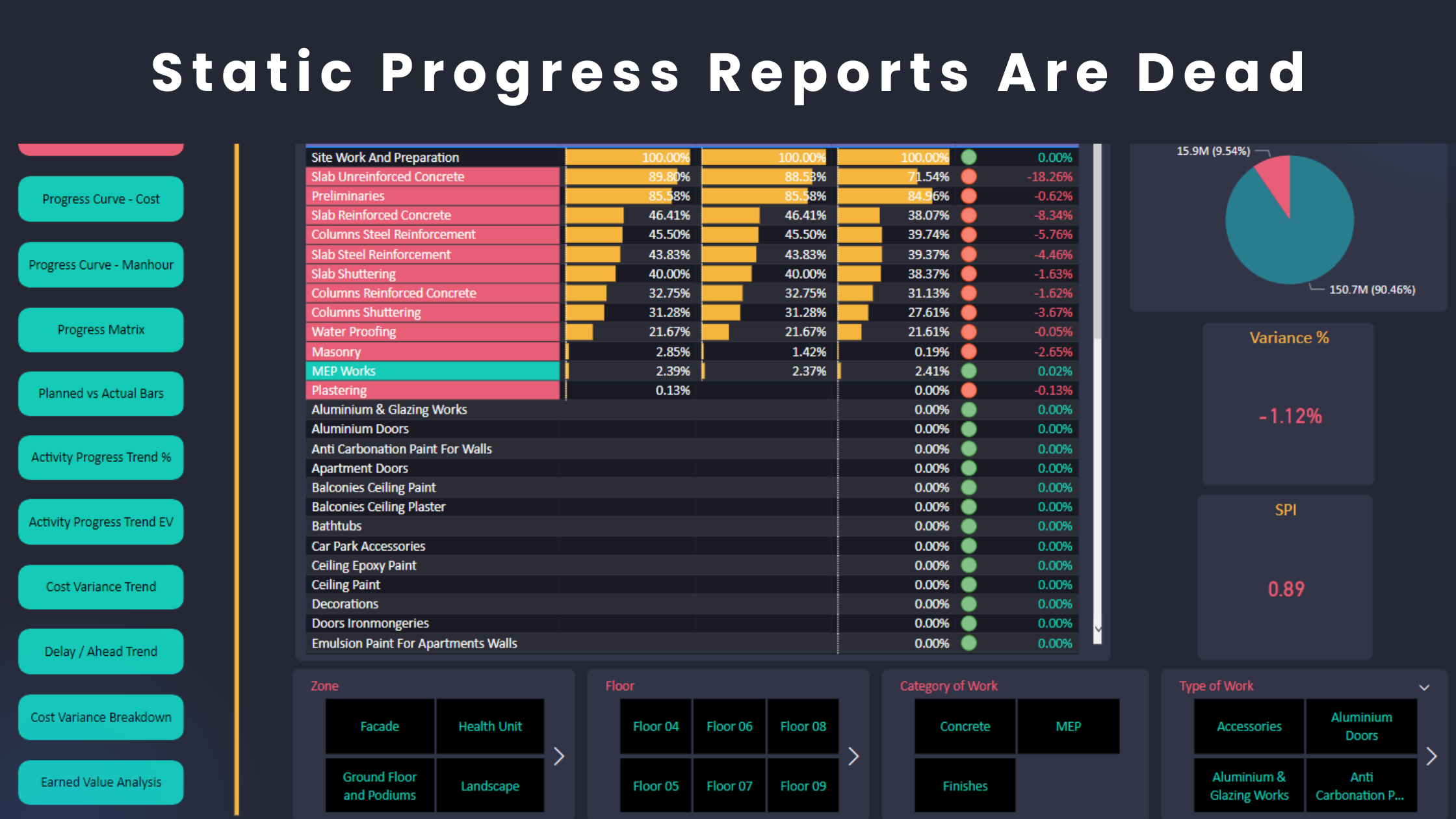One of the most common practices in project planning is the use of negative total float to measure schedule delays. Many Planning Engineers rely solely on negative float to assess project performance and identify critical delays. While this approach is effective in some cases, it is not 100% accurate. It overlooks key aspects of project performance that are essential to understanding the project status.
In this article, we’ll explore why focusing only on negative float is insufficient and how time sensitivity and earned value indicators provide a more comprehensive picture of project progress.
1. Understanding Critical Path and Time Sensitivity
In Critical Path Method (CPM) scheduling, activities on the critical path have zero total float, meaning any delay to these activities will directly impact the project’s completion date. These activities are highly time-sensitive.
Let’s look at the image below as an example.

- Red activities represent the critical path (zero float).
- Orange activities have high positive float and represent non-critical activities but have significant cost assignments.
Red Activities: The Critical Path
For the activities highlighted in red, any delay will cause a corresponding delay to the project’s completion date. These activities are critical and sensitive to time. As long as the contractor maintains the planned progress on these activities, the project will remain on schedule, with zero float.
However, focusing solely on these red activities doesn’t give a full picture of project performance. There’s another layer to consider – the earned value.
2. Earned Value Metrics
Now, let’s turn our attention to the orange activities. These activities have high positive total float, meaning they are not time-critical and won’t immediately impact the project’s completion date if delayed.
But here’s the key issue:
If the contractor fails to execute these non-critical activities as planned, the earned value cost will be severely impacted – even if the project completion date remains unaffected.
In some cases, you could have zero float (indicating the project is expected to finish on time), but your earned value indicators show a negative variance.
“While these activities are not critical, they must be expedited for two key reasons:
1- To achieve the target cash-in from payment applications and strengthen cash flow health.
2- If these activities continue to be delayed, the total float will be depleted, eventually making them critical.
3. Why Negative Float Alone Is Not Enough
Relying solely on negative float to measure project delays does not account for the cost and performance impact of non-critical activities.
Here’s what happens when Planning Engineers ignore this:
- A project may appear to be on schedule (zero float), but it’s actually suffering from low earned value performance.
- The contractor may be focusing only on critical path activities to avoid schedule delays, while neglecting the progress of high-cost, non-critical activities.
- This results in poor cost efficiency and low earned value outputs.
The slow rate of progress on the orange activities (non-critical) may not turn the float negative, but it will create a significant cost variance.
4. The Role of Earned Value Management (EVM) in Project Control
To avoid this pitfall, Planning Engineers must incorporate Earned Value Management (EVM) into their project control practices. EVM provides crucial performance metrics that complement float analysis. These metrics include Planned Value (PV), Earned Value (EV), Schedule Variance (SV) and Schedule Performance Index (SPI)
These indicators help Planning Engineers measure schedule performance more accurately.
Therefore, the Planning Engineer must utilize both Criticality and Earned Value Analysis to identify:
- Cost overruns on non-critical activities.
- Poor productivity rates that could impact the total float of non-critical and future critical activities.
- The true performance of the project beyond float analysis.
There is also another layer in analyzing the earned value based on both cost and manhours but I wrote a detailed article about it that you can read here.
Conclusion
In project planning and control, focusing solely on negative float provides an incomplete and sometimes misleading view of project status.
By considering time sensitivity and earned value indicators, Planning Engineers can achieve a more comprehensive understanding of project performance, ensuring they balance both schedule and cost efficiency.
The key to successful project control lies in integrating multiple performance metrics and ensuring that both time and cost objectives are met throughout the project lifecycle.
Negative float matters — but it’s not the whole story.
Regards,
Osama Saad, MBA, PMP, PSP, CCP, PMI-SP
Learn More!










